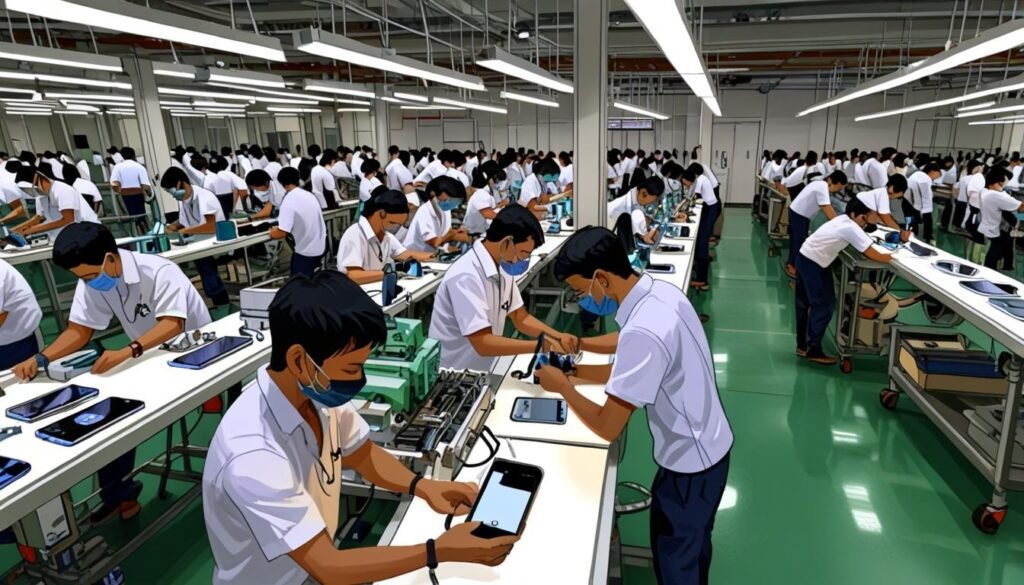**New Delhi**: Apple Inc is shifting its production strategy by ramping up iPhone manufacturing in India, now accounting for nearly 20% of global output. This move aims to diversify its operations from China, driven by geopolitical factors and government incentives to bolster local production.
In a strategic pivot, Apple Inc is significantly ramping up its iPhone production in India, aligning with broader efforts to diversify its manufacturing operations away from China. The company’s commitment to this shift is underscored by the announcement that it is now manufacturing iPhones worth $22 billion in India, which accounts for nearly 20 per cent of Apple’s global iPhone output. This reconfiguration of the supply chain, primarily influenced by geopolitical tensions and disruptions caused by the COVID-19 pandemic, marks a monumental adjustment in Apple’s production strategy.
According to a Bloomberg report, this transition has been catalysed by severe lockdown measures in China that impeded operations at Apple’s largest facility. In response to these challenges, Apple has begun to rely less on its traditional manufacturing base, gravitating towards India’s burgeoning production sector. iPhones are largely assembled at the Foxconn Technology Group’s facility located in southern India, with Tata Group also playing a pivotal role in this operation.
Expanding its footprint, Apple has reported that it exported iPhones worth Rs 1.5 lakh crore (approximately $17.4 billion) during the fiscal year ending March 2025. A significant factor contributing to this surge in exports was the implementation of ‘reciprocal’ tariffs by the US government under President Donald Trump, which led Apple to prioritise manufacturing iPhones in India for the lucrative American market. The shift has resulted in increased shipments from India to the US, particularly as iPhones assembled in India benefit from tariff exemptions not afforded to their Chinese counterparts.
This manufacturing shift is part of Apple’s longer-term strategy of diversifying its supply chain. Industry analysts from Bloomberg Intelligence estimate that while the transition may take up to eight years to reduce reliance on China by even 10 per cent, India is well-positioned to become a key player in this strategy. The Indian government has introduced $2.7 billion in incentives as part of its production-linked incentive (PLI) scheme designed to bolster electronics manufacturing, further solidifying India’s ambition to establish itself as a global hub for electronic goods. Additional support for this initiative includes India’s zero-tariff policy on exports of smartphones, laptops, and tablets to the US.
In terms of competitive advantage, the India Cellular and Electronics Association (ICEA), which comprises industry giants such as Apple, Foxconn, Xiaomi, Dixon, and Lava, highlights that both India and Vietnam enjoy a 20 per cent pricing advantage in the US market over Chinese-made smartphones, attributed to the absence of tariffs. While Vietnam has also gained traction by exporting Samsung smartphones to the US without duties, Apple’s production scale in India is rapidly increasing.
In addition to bolstering exports, Apple is committed to expanding its presence in the Indian consumer market, now claiming nearly 8 per cent of the smartphone market share, with sales reaching approximately $8 billion in the fiscal year 2024. This growth is poised to further entrench Apple as a formidable player within the Indian electronics market, accentuating its strategic shift and adaptation in the face of changing global dynamics.
Source: Noah Wire Services





